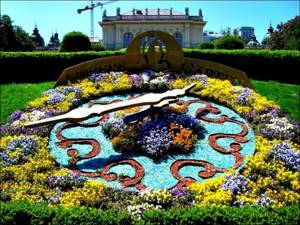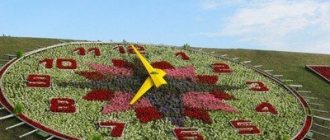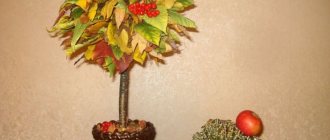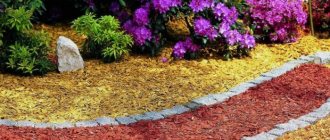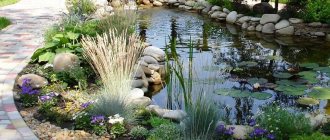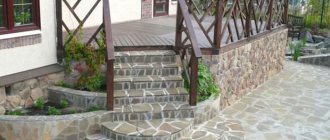An ancient hobby
Noticing that not all plants behave the same way, the ancient Greeks and Egyptians tried to create flower clocks. Similar plant clocks appeared in Italy and Scotland. In the mid-18th century, based on numerous observations, a unique flower clock was created by the Swedish botanist Carl Linnaeus.
The scientist called his unique composition, consisting of 50 species of plants, “Flora Clock.” A specific flower group in his creation corresponded to each hour. A copy of this clock still adorns the square in the Swedish city of Uppsala.
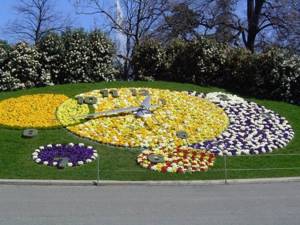
Photo of flower clock
Read here Bonsai tree - rules for use in landscape design, types of plants and tips for caring for them (135 photos)
Did you like the article?
0
Biological rhythms of flowers
Flowers have different bloom times during different periods of the warm season and at changing times of day. Among plants, as among people, there are “owls” and “larks”.

Some open their buds at dawn with the first rays of the sun. Others exude a unique scent during the day, others bloom at sunset, and a few flowers “wake up” only at night and show off their beauty in the moonlight. Based on these features of the flower guard, a flower clock is created. They don't tick or ring, they bloom.

Wonderful flowerbed
The flower clock is a flowerbed in the form of a dial. Correctly planted flowers in different segments give originality and specialness to the object. Located in each of the 12 sectors, the plants open, bloom and close at specific times. Such a clock cannot show the exact time, but can clearly demonstrate the life of flowers at different times of the day and night.
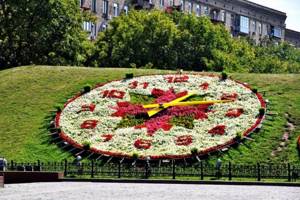
In its own mode, the leaves also fold and straighten. When the sun rises and drops of dew appear, bees fly out in search of nectar, butterflies begin to flutter, and the primroses of the coming day bloom. With each subsequent hour, the picture of nature changes, painted with new colors and shades. Those plants that “slept” at night begin to smell fragrant in the morning. And those that will be at rest during the daytime begin to shine with the onset of dusk.
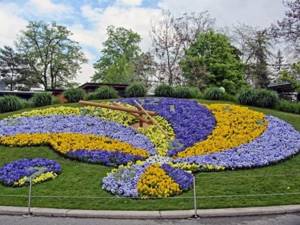
To create a flower clock on your site, you need to carefully study the plants intended for planting. To ensure continuous flowering for different varieties from early spring to late autumn. And each of the plants has its own biorhythms, lives according to an individual schedule, even during the day.
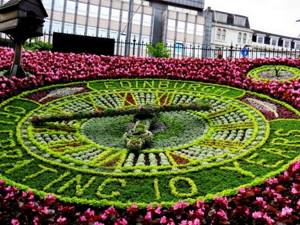
LiveInternetLiveInternet
Quote from Galche
Read in full In your quotation book or community!
Carl Linnaeus and his flower clock
Carl Linnaeus and his flower clock
Carl Linnaeus, is this name familiar to you or not? I found out about it when I decided to find out what a flower watch is, and then I found out who first created such a watch. This was Carl Linnaeus (1707 - 1778), a Swedish naturalist and physician, the creator of a unified system of classification of flora and fauna, in which the knowledge of the entire previous period of development of biological science was generalized and largely streamlined. Linnaeus is the most famous Swedish natural scientist. In Sweden, he is also valued as a traveler who discovered their own country for the Swedes, studied the uniqueness of the Swedish provinces and saw “how one province can help another,” as it is written about him on Wikipedia.
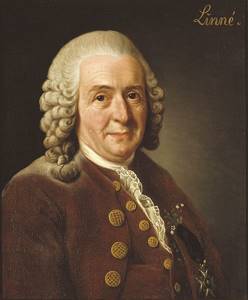
Carl Linnaeus created the world's first flower clock in 1720. They are located in the city of Uppsala (Sweden). The clock was created based on the treatise “The Dream of Plants”. Carl Linnaeus devoted his entire life to the study and systematization of flowers and plants. During his research, he noticed that flowers could be grouped by closing time and to test his theory, Linnaeus created a flower clock. And before creating this clock, he observed about 50 plants and noted the reaction of the flower of the plant in the morning and evening, that is, which ones opened in the morning and closed in the evening (at night) - flax, saffron (crocus), bindweed, and noted those that, on the contrary, opened at night and closed during the day - mirabilis, datura, fragrant tobacco, evening primrose. And, I also noticed that at certain times of the day the light intensity changes noticeably and the flowers of dandelion and tulips react to this - they bloomed when the intensity increased and the buds closed when the light weakened. The flowers of some plants, on the contrary, bloomed during the day when the light weakened, and when the rays were very bright, they closed, as if they were “squinting” from the sun. And after such work, he decided to create such a flower clock.
And in Russia there is a flower clock, which is located on Poklonnaya Hill in Moscow. They consist of perilla and kochia, and the numbers are made of begonias.
If you are engaged in the construction of any object, then go to the website: prostor-td.ru, there is fiberglass reinforcement at a price. Visit and choose fiberglass reinforcement of various diameters and at various prices. And, you will also find other building materials here.
Conditions for erecting a flower garden
Each owner of a country estate can create such an original landscape design object on his site. This activity is of great interest for a keen gardener; it is educational, exciting, but very painstaking. First you need to study information about flowering plants in your region of residence. Blooming flora is able to respond to changing factors in the surrounding atmosphere and change the timing of flowering with changes in light, humidity, and temperature.

To avoid gross mistakes when constructing a functional flower bed, you need to use plants with pronounced biorhythms. Using this clock you can determine the time of meals: breakfast, lunch, dinner. The flowerbed can have the shape of a circle or a square. Around its area, plant 4 small flower beds with certain groups of flowers at the location of 9, 12, 16 and 21 o'clock.
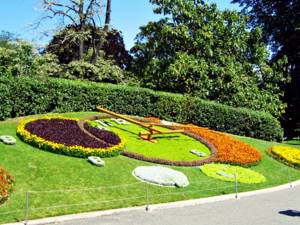
When planting plants, it is necessary to take into account the climate of the area and the duration of natural light. The desired functionality of a hand-made unusual watch can only be achieved in sunny weather. In this case, they will show a more accurate time.
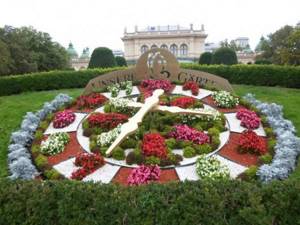

Ground cover (creeping) perennials blooming all summer: types, names, photos, description. TOP 10 best options for a summer residence
Clematis flowers - 70 photos of a beautiful flower. Planting, growing and care in open ground
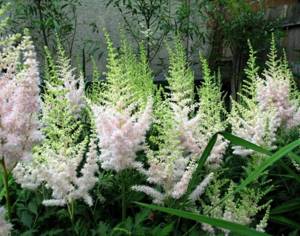
Astilbe: planting, care. growing from seeds, photos, description of species
The choice of location also influences the opening of buds. It is advisable that there are no buildings near the landscape design object. The shadow falling from structures can disrupt the duration of daily flowering.
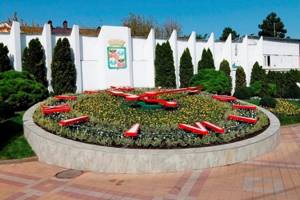
Decoration of the site
A decorative flowerbed in the shape of a dial, being in a prominent place, attracts attention, pleases with its beauty, and lifts your spirits. You can create a flower clock in your country house based on many years of observations of plants, the timing of their flowering during the season and the opening and closing of buds during the day.

The flowerbed should be placed with a slope to the east. Fertilize the soil for the decorative object so that the flowers have food for lush flowering. If the flower garden is located on the lawn, then around its perimeter it is worth making a frame of stones, gravel or painted bricks. This way the flowerbed will stand out among the greenery and gain more impressive expressiveness. It is also necessary to separate the sectors of the flower clock so that each variety has clear boundaries.
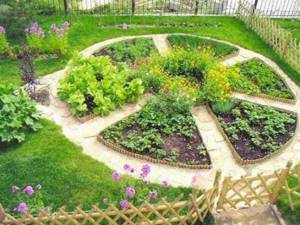
It is advisable to plant plants with contrasting colors nearby. If flowers with blue and violet, or red and orange colors come into contact, then there will be no contrast. Plants should also be selected according to height.

Low-growing plants are more suitable for such a flower bed. The daisy blooms at dawn, then the calendula blooms, followed by the violet. Poppies and bells take up the baton. At sunset, fragrant tobacco, noctule, opens. The arrows for the dial can be reinforcement rods, wooden slats or pegs, remaining balusters from the stairs and many other materials suitable for this purpose.
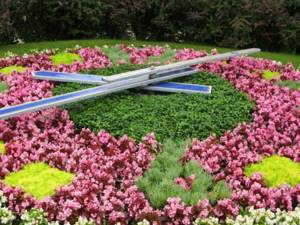
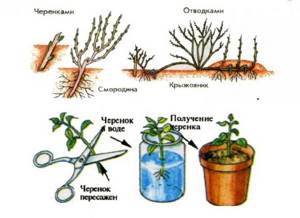
Pelargonium in open ground: planting, growing, care, reproduction, photo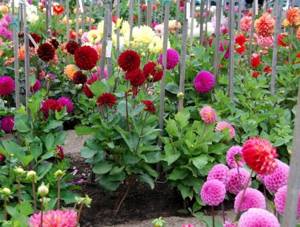
Dahlia flowers: planting and care in open ground. Photos, instructions, types, varieties, reviews

Marigolds: planting, growing, care and propagation in open ground. Overview of all types and varieties of marigold flowers
If you build a clock mechanism into a flower garden, then the flowers can simply be a decorative background. The background can be either monochromatic or consisting of different plants. But such a composition cannot be called a flower clock. This will be an original flower bed with arrows.
Natural biorhythms of plants
To begin with, you should choose a sunny, open area where shadows from buildings or trees do not fall. It is advisable that the clock be located at the intersection of garden paths or in another prominent place.
As for the shape, the easiest way is to make a flower bed in the form of separate modules with different colors. However, in this case, you will need to accurately study the closing and opening times of petals in different plants (or use tablets with inscriptions for these purposes). This is not very convenient, so we recommend that you use the traditional watch shape - round with twelve sectors, each of which will correspond to a time period lasting 1 hour.
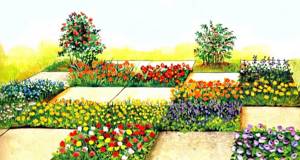
When creating flower clocks in the form of separate modules, you need to know the daily “schedule” of plants
Flowers are planted in each sector and open at the appropriate time interval. Below is a table that shows the daily biorhythm of some plants that you can use for your flower clock. The waking and sleeping schedules of plants in different areas may vary, so you should not follow the instructions exactly - these are approximate data. It is best to observe the selected plants and create your own table of their biorhythms before creating a clock.

A table indicating the timing of the opening and closing of petals in different plants
Please note that such a watch will only show the time accurately in clear sunny weather. When it is cloudy or raining, you should not wait for accurate readings - the clock will “lie”.
To study nature
Experiencing diverse natural phenomena in childhood, children accumulate impressions and develop their curiosity, study the world around them and its beauty. For this purpose, teacher speech therapist Yu.V. Morozova created the “Flower Clock” project. The purpose of this project is for children to study the world of flowers and the conditions for their growth, methods of care and development of a sense of beauty. This development instills aesthetic perception, talks about the work of gardeners and the wide variety of flora.
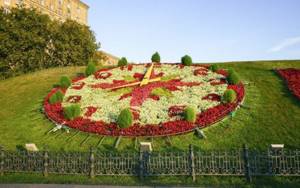
Teachers in kindergartens and teachers in primary school, based on this methodology, instill in children a caring attitude towards the nature around them, help children understand the differences in varieties and shades of flowers, and teach them to observe the life of plants. During classes, children assemble inflorescences from individual parts, which helps them study the structure of flowers.
